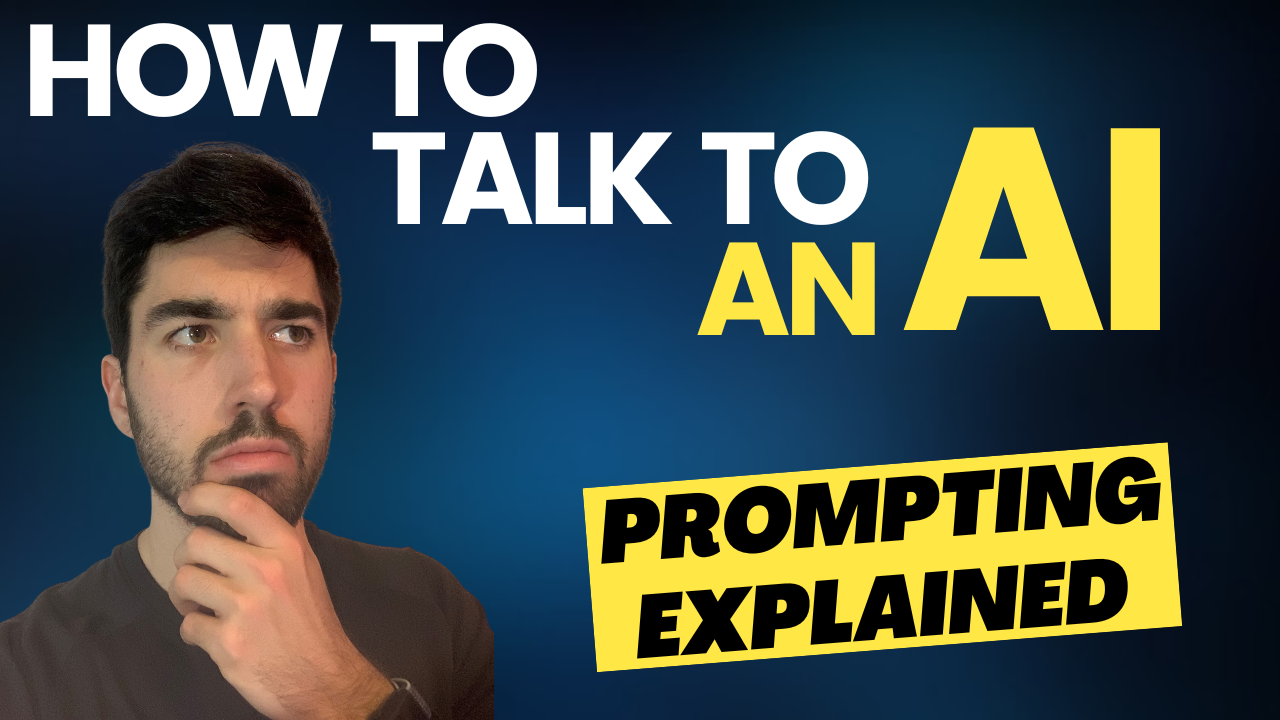Prompting Explained: How to talk to ChatGPT
What is a prompt engineer and how to improve at it…

Watch the video
ChatGPT, GPT-3, DALLE, MidJourney, Stable Diffusion…
What do all of these AI models have in common? Other than being way too expensive to create and very complicated to understand unless you read my articles ;), they are all models regular people like us can use to generate amazing results or even create products through prompting.
Prompting is pretty much the only skill you now require to be a master of these new large and powerful generative models, whether it be to generate cool stories, amazing images, or any cool feature like a text summarizer or automatic video editor tool. The results of these models are only getting better with time, but it is often hard to get exactly what you are looking for. While this is also only improving, the best way to leverage these large models’ potential is to be a better prompt engineer.
But what is a prompt engineer? Moreover, what is this prompting thing I have been talking about for the past minute or so and how can we learn this skill and get better?! Well, that’s exactly what we are going for in this article…
Prompting is how humans can talk to AIs. It is a way to tell the AI what we want and how you want it, usually done with words. For example, you might want to generate an image but have nothing to show it as an example. What would you do? You’d do the same thing as with an artist you would hire: try to describe what you want with the best words possible and some sketches if you can draw. This is the same thing with today’s most powerful AIs. As we saw in my previous video about word embeddings, AIs can understand words, though they understand them differently than we do. This is where prompt engineering comes into play. Prompt engineering is the task of finding the prompt that gets the best results from the AI.

A prompt engineer will translate your idea into words that the AI can understand: it is a translator between “human language” and “AI language”. You can see prompt engineering as the same as an expert Googler. Lots of people get hired because they know how to use Google well and get answers to their questions, compared to your dad, who may struggle to find what he wants. That’s because you know what Google’s search box is expecting and which keywords are good or not, whereas your dad does not. He’s typing as if he is asking his questions to another human being, which the machine cannot understand.
Text prompting is a way to talk to language models. The best way to understand this is by looking at a simple example. Let’s ask GPT-3 to solve a math problem.

We can see that it will get the wrong result. However, we can further adapt it to the AI, like the simple addition of “Let’s think step by step,” it will succeed.

Image prompting is quite similar; we can use words to describe an image to a text-to-image model and see what it creates. We see that as we change different descriptors, the images that the model generates change accordingly. The goal behind prompt engineering is to optimize that.
We believe it is important to learn this new skill as large models will only become more available and more powerful. It is obvious that people will get paid just to use and master them, and we want to help you reach that. To this end, along with my friend Sander and Towards AI, we are building a course on prompting called Learn Prompting, where you can learn a lot about good prompting practices and cool techniques or even get tips from experts specifically oriented toward the model you are tackling, whether it is ChatGPT, MidJourney or anything else. Check it out to learn more about prompting and get insights from experts in the field.
This is an open-source work in progress, and we aim to continually improve the course and add cool new sections over time. We’d love it if you want to contribute and share your knowledge with more people through this platform. Join the Learn AI Together community on Discord to learn more about our new course and chat with us!
Thank you for reading,
Louis
References
►Learn Prompting: https://learnprompting.org/
►Our Twitter accounts: https://twitter.com/Whats_AI https://twitter.com/SanderSchulhoff https://twitter.com/towards_AI https://twitter.com/learn_prompting
►Discord: https://www.louisbouchard.ai/learn-ai-toget
